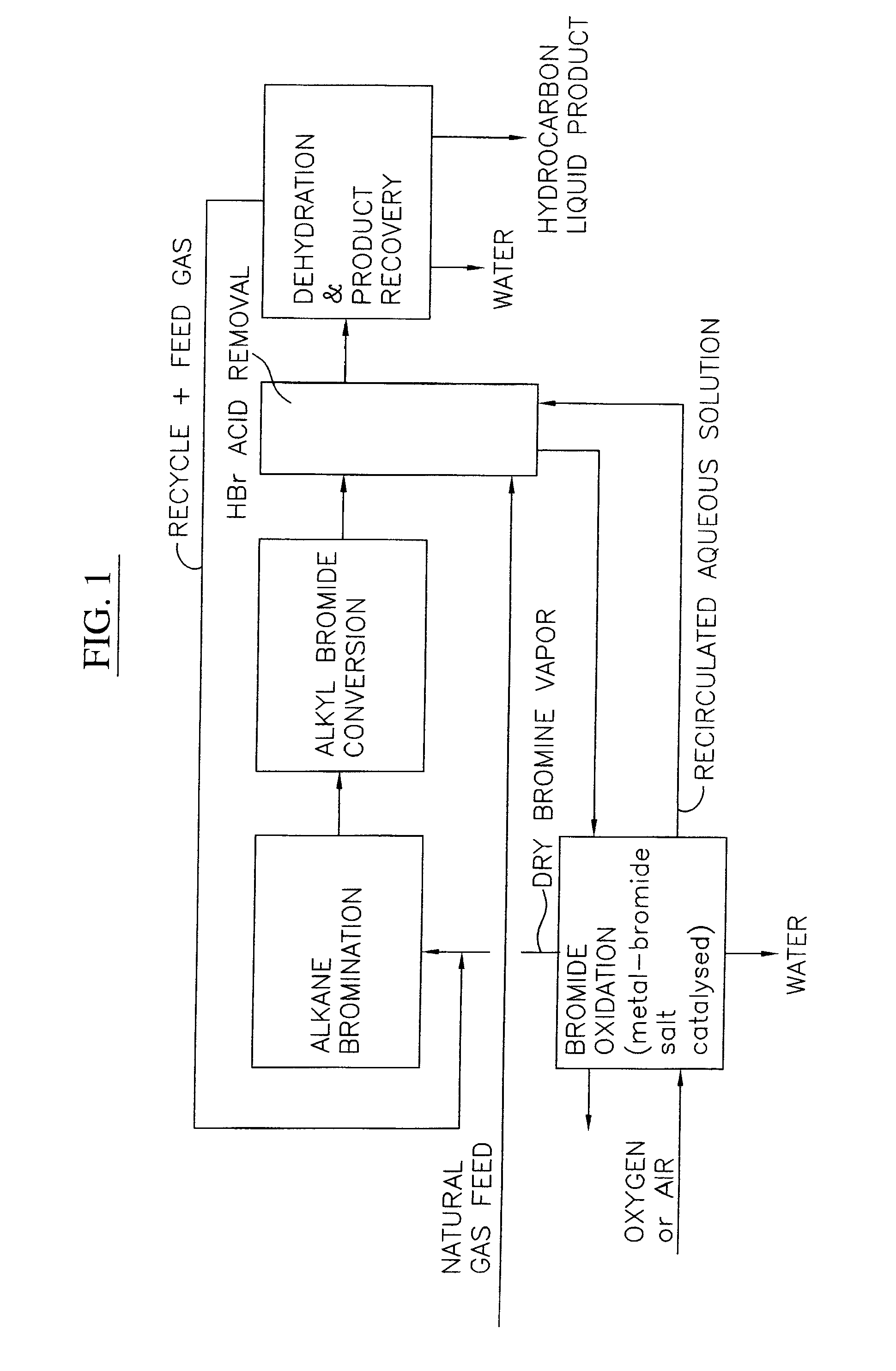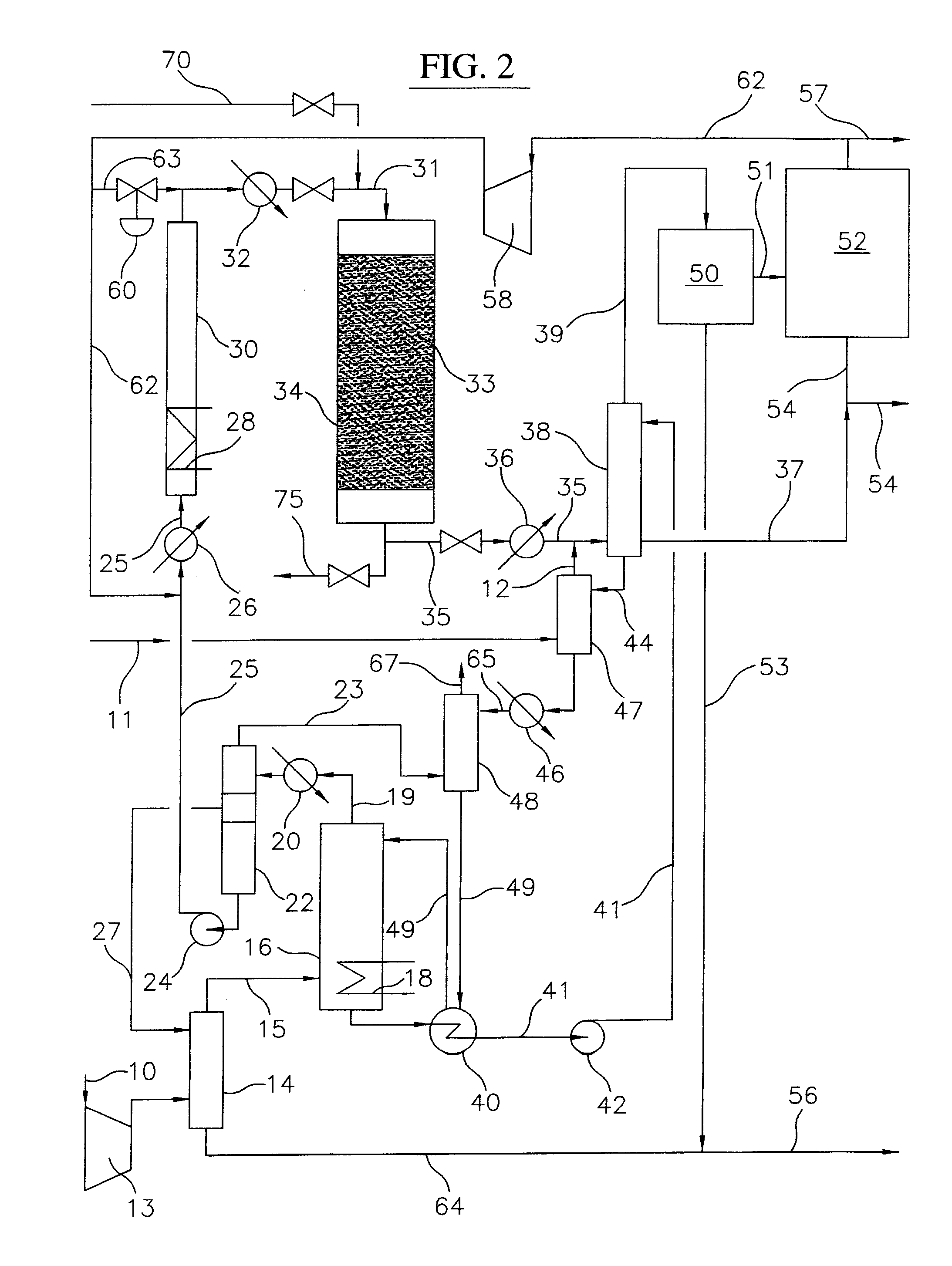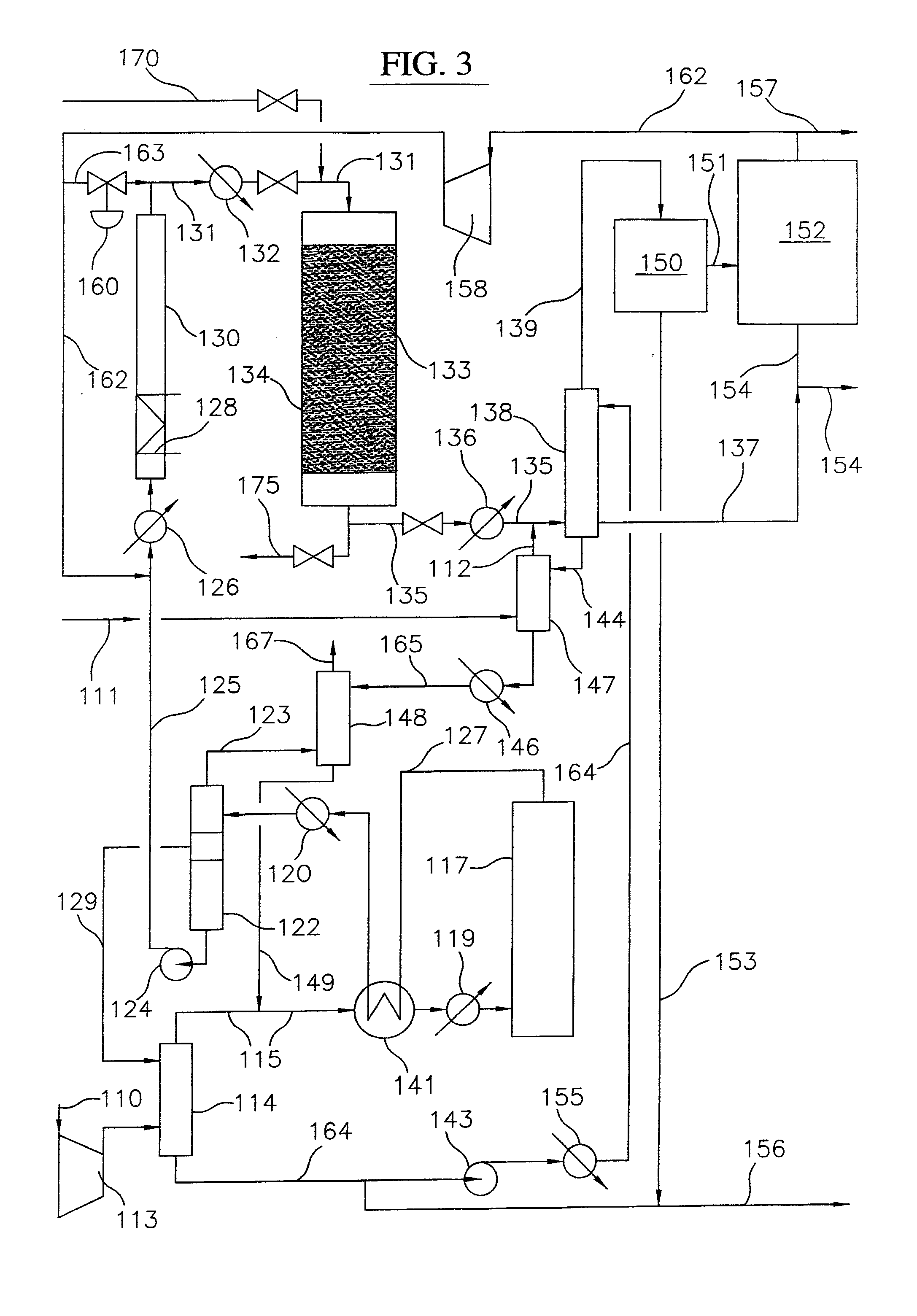Processes for converting gaseous alkanes to liquid hydrocarbons
a technology of gaseous alkanes and liquid hydrocarbons, which is applied in the field of process of converting lower molecular weight alkanes to olefins and higher molecular weight hydrocarbons, can solve the problems of high cost of lng process, limited distance over which natural gas may be transported, and high cost of gaseous process
- Summary
- Abstract
- Description
- Claims
- Application Information
AI Technical Summary
Benefits of technology
Problems solved by technology
Method used
Image
Examples
example 1
[0109]A mixture of methane and vaporized bromine at various mixture ratios is flowed vertically upward through a un-packed tubular reactor which is externally heated in three zones using electrical heating elements. The top (outlet) zone is maintained at an average temperature of about 494° C., the middle zone is maintained at an average temperature of about 450° C. and the inlet (preheat) zone is operated at various temperatures over the range of about 150° C. to about 300° C. Reaction residence times ranged from about 2.0 to 4.5 seconds. As depicted in FIG. 14, increasing the molar ratio of methane to bromine introduced into the bromination reactor above 2.5 results in a significant increase in monobromination selectivity of approximately 70% At molar ratios of methane to bromine of about 5, monobromination selectivity averages about 80%, while at molar ratios of methane to bromine of about 10, monobromination selectivity exceeds 80%. As further depicted in FIG. 15, this increased...
PUM
| Property | Measurement | Unit |
|---|---|---|
| Residence time | aaaaa | aaaaa |
| Molecular weight | aaaaa | aaaaa |
| Molar ratio | aaaaa | aaaaa |
Abstract
Description
Claims
Application Information
 Login to View More
Login to View More - R&D
- Intellectual Property
- Life Sciences
- Materials
- Tech Scout
- Unparalleled Data Quality
- Higher Quality Content
- 60% Fewer Hallucinations
Browse by: Latest US Patents, China's latest patents, Technical Efficacy Thesaurus, Application Domain, Technology Topic, Popular Technical Reports.
© 2025 PatSnap. All rights reserved.Legal|Privacy policy|Modern Slavery Act Transparency Statement|Sitemap|About US| Contact US: help@patsnap.com



